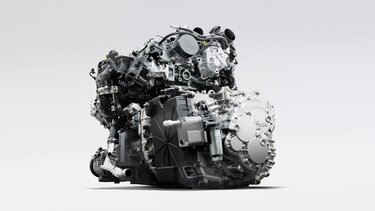diesel engineRENAULT TRAFIC PASSENGER
diesel
blue dCi engines
With advanced technologies, the Blue dCi engines on Renault Trafic Passenger combine performance and efficiency. Take advantage of reduced emissions while guaranteeing power and driving pleasure.
compare diesel engines
| Blue dCi 110 | Blue dCi 150 | Blue dCi 150 EAG9 Auto | Blue dCi 170 EAG9 Auto | |
|---|---|---|---|---|
| certification | M1 | |||
| fuel | diesel | |||
| engine rating (hp) | ||||
| max. power kW CEE (hp) at engine speed (rpm) | 81 (110) at 3,500 | 110 (150) at 3,500 | 110 (150) at 3,500 | 125 (170) at 3,500 |
| max. torque Nm CEE (m.kg) at engine speed (rpm) | 300 at 1,500 | 350 at 1,500 | 350 at 1,500 | 380 at 1,500 |
| type of injection | common rail + variable geometry turbo | |||
| capacity (cm3) | 1997 | |||
| number of cylinders/valves | 4 in line/16 | |||
| emission standard | Euro 6 | |||
| start & stop | yes | |||
| service intervals | up to 24,000 miles /2 years(1) | |||
| performance | ||||
| max. speed (km/h)/ 0 - 100 km/h(s) | 161 - 16.5 | 178 - 13.6 | 175 - 13.9 | 175 - 12.5 |
| gearbox | ||||
| type of gearbox | manual gearbox | manual gearbox | EAG9 automatic gearbox | EAG9 automatic gearbox |
| number of gears | 6 | 6 | 9 | 9 |
| turning circle between kerbs/ between walls (m) | short wheelbase: 12.4 / 12.8 long wheelbase: 13.8 / 14.3 |
|||
| ABS with EBA and EBV / Adaptive ESP with ASR | standard | |||
| front: ventilated disc Ø (mm) x width (mm) | 206 x 28 | |||
| rear: solid disc Ø (mm) x width (mm) | 280 x 12 | |||
| certification protocol | WLTP(3) | |||
| eco mode | yes | |||
| tank capacity (L) | 80 | |||
| AdBlue® tank capacity(4) (L) | 24,7 | |||
| combined CO2 emissions (g/km)(2) (mixed) min - max | 175 - 180 | 175 - 179 | 182 | 184 - 185 |
| combined fuel consumption (mpg) min - max | 42.2 - 41.5 | 42.2 - 41.5 | 40.9 | 40.4 |
(1) an engine consumes oil to lubricate and cool moving parts. It's normal to top up oil one or more times between oil changes.
(2) the fuel consumption and the CO2 emissions are certified using a standard, regulatory method. Identical for all vehicle manufacturers and can be used to compare vehicles.
(3)WLTP (Worldwide Harmonized Light Vehicles Test Procedures): this new protocol obtains results that more closely reflect your actual everyday use than those produced by the NEDC protocol.
(4) actual fuel and AdBlue® consumption depends on conditions of vehicle use, equipment, load and driving style.
